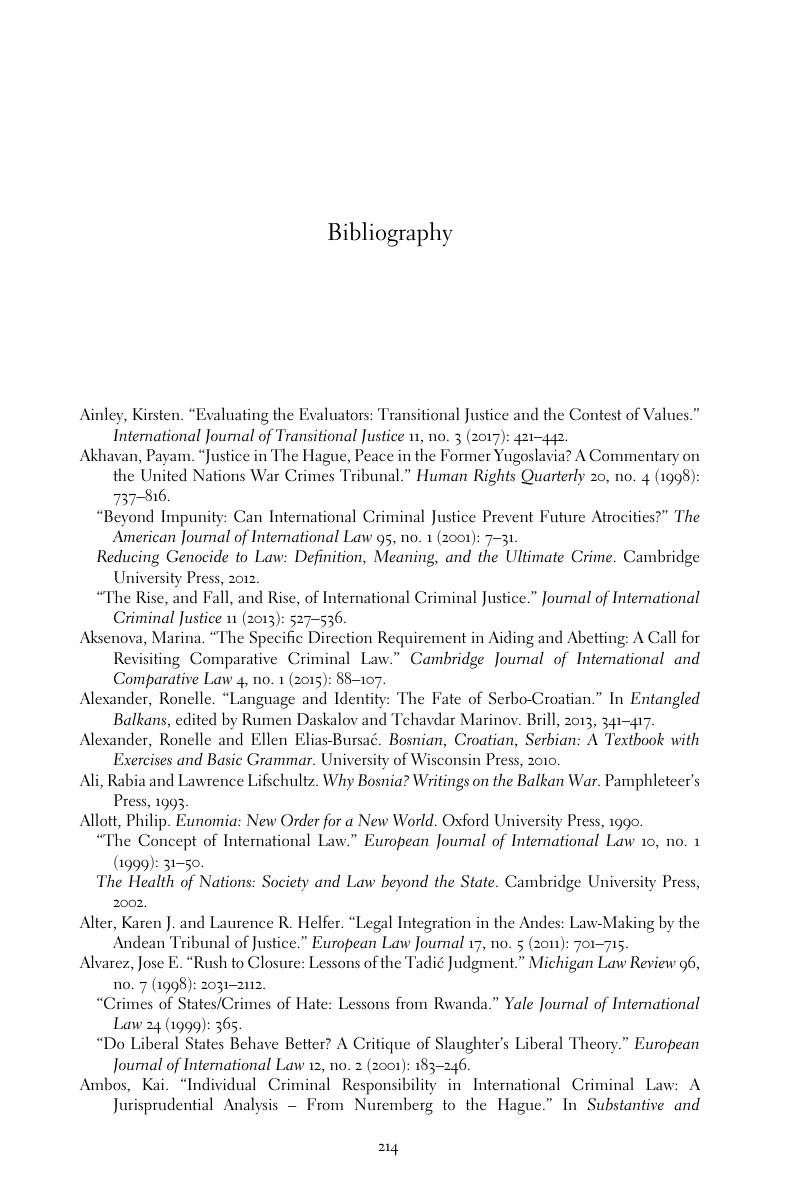Book contents
- Model(ing) Justice
- Model(ing) Justice
- Copyright page
- Contents
- Preface and Acknowledgments
- Table of Authorities
- Introduction
- Part I Theorizing International Criminal Justice
- Part II Applying International Criminal Law’s Paradoxes to Paradigmatic International Criminal Law Doctrine: Post-Rule-of-Law Procedure, and Illiberal Theories of Culpability
- Part III Narrative and Discourse Emerging from International Criminal Justice Mechanisms
- Conclusion
- Appendix A ICTY Prosecutions as of June 20181
- Bibliography
- Index
- References
Bibliography
Published online by Cambridge University Press: 16 November 2018
- Model(ing) Justice
- Model(ing) Justice
- Copyright page
- Contents
- Preface and Acknowledgments
- Table of Authorities
- Introduction
- Part I Theorizing International Criminal Justice
- Part II Applying International Criminal Law’s Paradoxes to Paradigmatic International Criminal Law Doctrine: Post-Rule-of-Law Procedure, and Illiberal Theories of Culpability
- Part III Narrative and Discourse Emerging from International Criminal Justice Mechanisms
- Conclusion
- Appendix A ICTY Prosecutions as of June 20181
- Bibliography
- Index
- References
Summary

- Type
- Chapter
- Information
- Model(ing) JusticePerfecting the Promise of International Criminal Law, pp. 214 - 242Publisher: Cambridge University PressPrint publication year: 2018



